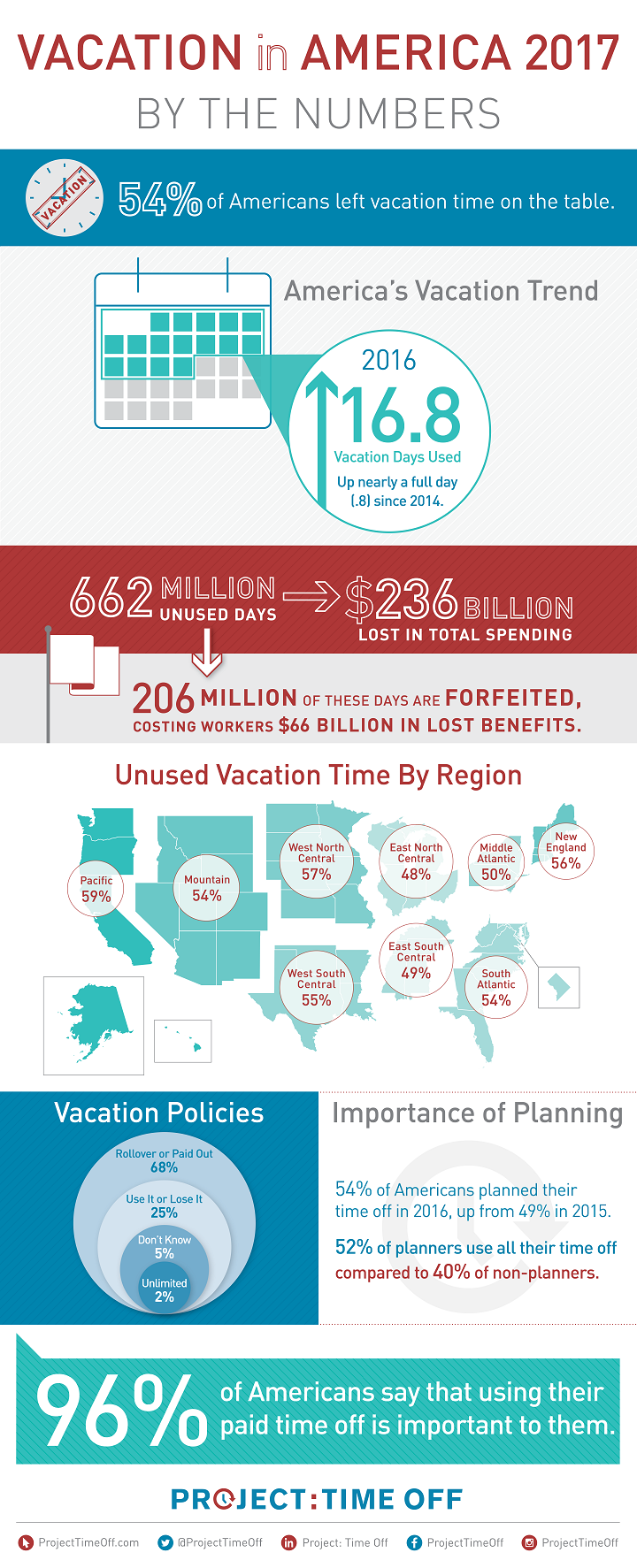Are you a work martyr? That’s a question that Melody Wilding poses in her article on a new variation of workaholism that surfaces in today’s always on connected culture. She offers 10 red flags that will help you self-diagnose.
One sign that Americans may indeed be work martyrs is the fact that too many people end the year with unused vacation time. In 2016, 662 million vacation days were left on the table, four million days more than 2015. Of that number, almost a third of the days, or 206 million, were forfeited entirely, translating to $66.4 billion in lost benefits, or an average of $604 per employee.
This information is sourced from Project Time Off, which recently issued a new report on American vacation behavior. The report notes that on average, Americans took 16.8 days of vacation in 2016. up more than a half day from 2015. But despite the uptick, more than half of all employees (54%) ended the year with unused vacation time.
There are many reasons beyond sheer workaholism why people don’t use their full vacation time allotment. The report notes that one reason may simply come down to poor planning. Workers who planned their vacation were more likely to use their time off. Gender and seniority were factors too.
“Men were more likely than women to use all their vacation time in 2016, up three percentage points from 2015 to 48 percent. While women say that vacation is “extremely” important to them, more so than men (58% to 49%), only 44 percent of women use all their time off. This disconnect between belief and behavior only worsens among Millennial women who, despite being more fervent believers in the benefits of time off than their male counterparts, take less time off (44% Millennial women vs. 51% Millennial men) due to an overwhelming amount of reported guilt, fear, and work martyr habits.
Whether some of these fears are warranted or not, muddled messaging in the workplace extends beyond gender and generational differences. An employee’s view of their company and corresponding vacation culture varies based on their rung of the corporate ladder. Compared to non-managerial employees, senior leaders are more likely to believe the company encourages vacation (50% to 30%), feel supported by management (59% to 39%), and hear about the value of taking time off (62% to 51%). Despite their positive feelings about company culture, senior leaders feel the pressures of taking time off more acutely and are less likely to use their days than non-managers (61% to 52%). “
It’s a shame that vacation time and paid time off goes unused – many employees fought to get such benefits. Taking time off can replenish and reinvigorate you, reduce your stress level, and protect your health. It is one of the healthiest things we can do to take care of ourselves. We come back to work with increased commitment and productivity. So what are you waiting for – if you haven’t yet scheduled a vacation this year, get your planner out!


